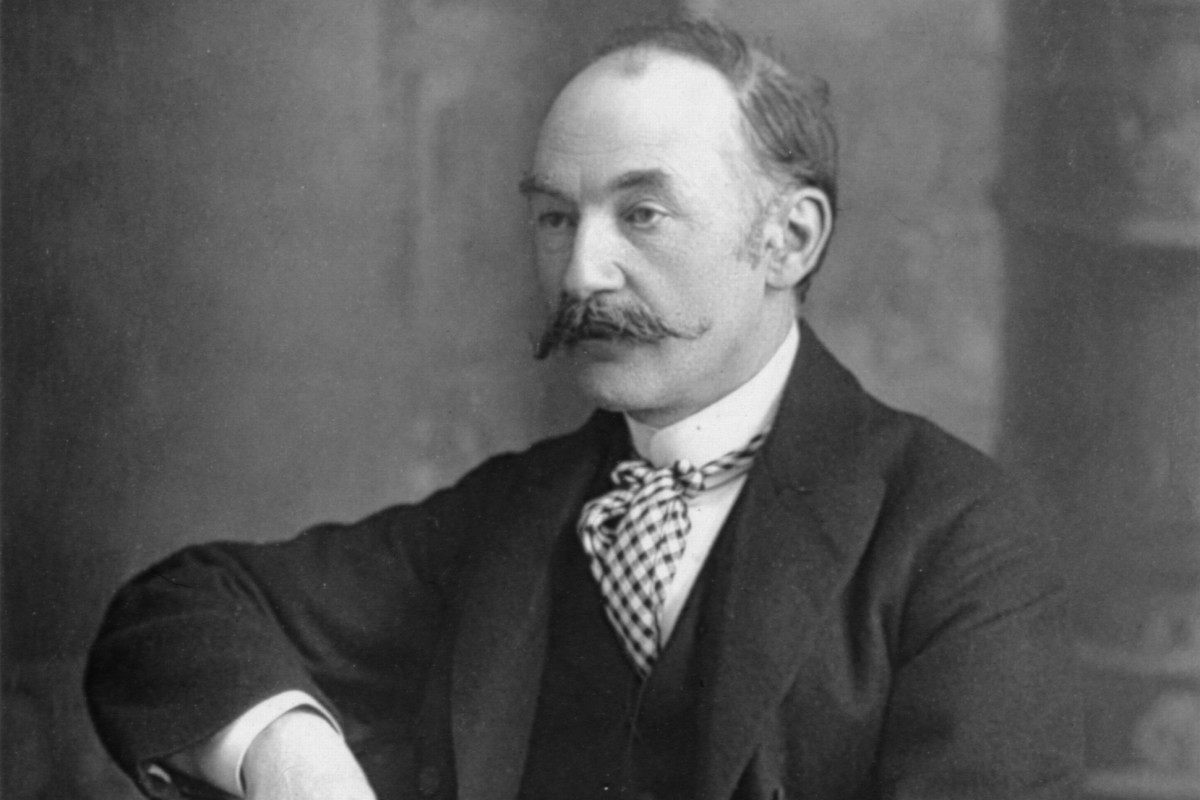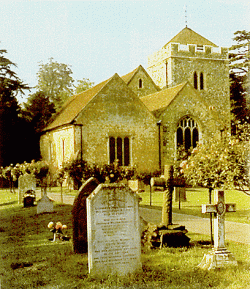This poem was written during 1915, when people affected by the war were looking for all sorts of escapism, ultimately turning to books and poems for it. This poem is a sort of escape too. The speaker of the poem escapes into his own mind and recaps memories while at the same time observing his surroundings on his night stroll.
Rhapsody On a Windy Night: About the Poet
Thomas Stearns Eliot (T S Eliot) was born in 1888 in Boston, United States. However, he had his roots in Old and New England. T S Eliot first began to write poetry when he was 14. He first published his poem in 1905 while still in school. 10 years later, he would receive wide attention for his masterpiece ‘The Love Song of J. Alfred Prufrock.’ T S Eliot went on to become an essayist, playwright, and literary and social critic. His most notable works include ‘Four Quartets,’ ‘The Waste Land,’ and ‘Murder in the Cathedral. He received many awards for his works, including the ‘Nobel Prize in Literature and ‘Order of Merit.’ A huge contributor to modernism, Eliot died at the age of 76 in 1965 of emphysema.
Rhapsody On a Windy Night: Setting
The poem’s setting is on streets during the night, specifically from midnight to 4’o clock in the morning. The poem ends with the speaker’s home, though.
Rhapsody On a Windy Night: Poetic Devices
Personification:
There are many personifications in this poem, especially of lamps. The lamps are shown to be talking to the speaker at various hours of the night (or the morning). Further, the moon I personified.
Imagery:
There is some pretty complex imagery running throughout the poem. We see a madman shaking geranium, a woman behind a door, a boy along a quay, a twisted branch on the beach, and many more.
Enjambment:
Verses continue from one sentence to another in parts of the poem.
Alliteration:
Some alliteration is seen in parts of the poem. ‘Barnacles on his back,’ ‘cigarettes in corridors’ are some of the examples.
Onomatopoeia:
The lamp is said to sputter.
Rhapsody On a Windy Night: Summary
The speaker of the poem is walking alone on the night streets. The moon above jogs his memory and shakes it, making him all confused and making his memories lose all sense and relations. The rest of the poem is about how the speaker thinks of various things at various times, all of which are explained in the analysis section. The speaker finally returns home at 4’o clock and then sleeps to face the next day.
Rhapsody On a Windy Night: Analysis
The speaker of the poem is walking on a street at 12 o’clock. We know its nighttime by ‘lunar synthesis’ and ‘lunar incantations,’ which imply that the moon is out. It is known that the moon induces in madmen a kind of frenzy which only makes no sense to the sane mind. The speaker is experiencing the same frenzy that night. The moon makes him moonstruck. As a result, his memory becomes distorted and disconnected. It is all scattered, and the relations and associations go out the window. Each street light that he passes makes the effect more profound, and his memory is all shaken up. This is compared to a madman shaking a dead geranium, which is a flower. Thus, at 12’0 clock, the speaker has come under the spell of the moon, and his memory is all jogged up without relation.
At half-past one, he is still continuing his walk. The street light is said to sputter and mutter. This is personification right here. The street lamp tells him to regard a woman. This talk of the street lamp can be taken as the effect of the spell. The woman in question hesitates to call out to him. She is behind a door. Her corner of the dress can be seen, and it is all torn and stained. Her eyes are twisted, like a crooked pin. This is a simile. The woman, though not said explicitly, maybe a prostitute. This is an allusion.
The twisted eye of the woman jogs up his memory, and he is taken through seemingly unrelated things. The speaker sees a twisted branch on the beach and a broken spring in a factory yard. The branch was all eaten up, and it was stiff and white. The speaker thinks that it is the earth showing its skeleton. The spring in the factory yard is now all rusted. Its strength has left it, and it was all hard and ready to snap. These memories of his, the branch, and spring are metaphors for something greater. The branch can be a metaphor for the human soul. It was all whitted away and worn out, laid bare to its bone, by human or nature activities. It is a metaphor with action in it. On the other hand, rust has gathered on the spring. It means the soul was inactive for a long time. Even though not active, its strength has left it, and it was ready to snap. This is again dependent on the interpretation of the reader.
At half-past two, the street lamp speaks again. There is some ambiguity as to whether the speaker was in motion or rest through this one hour. It depends on the street lamp; if it is the same as the one referred to in the previous case, it can be assumed that the speaker was unmoving. But it can be safely assumed that the speaker did move during this one hour.
The street lamp tells the speaker to remark on the cat, which flattened itself in the gutter and devoured a rancid piece of butter. This image of the cat reminds the speaker of a boy who pocketed a toy automatically, which did not belong to him when he was passing by the quay. The speaker could see nothing behind the boy’s eyes, implying that he was void of emotion, unable to differentiate between good or bad. He is now reminded of the eyes which looked through lighted shutters, possibly hungry eyes looking through the windows into a restaurant. Then he is reminded of a crab that tightly held onto a stick which the speaker held for it. In this paragraph, the speaker speaks of the depravity of the humans, of the conditions in which some live. His memories jumping from one thing to another tells us that he is still under the spell.
At half-past three, the lamp breaks into a song. It tells the speaker to look at the moon, the moon which held no grudges. This one particular sentence is written in French. The moon is said to wink with a feeble eye meaning that it was weakened, indicating the approaching dawn. And yet, it smiles into corners and smoothens the hair of the grass. The moon is said to be alone, with lost memory, same as the speaker of the poem. And this reminds the speaker of all that is dry and sad and alone.
And at four o’clock, the lamp says here is the number on the door. The speaker has finally returned to his home. ‘Memory! You have the key’ implies that the key to his home is in his memory. The poet ends the poem by saying the last twist of the knife, the meaning of which is explained in the following.
The poem is about humans’ loneliness. The speaker of the poem is walking on the roads alone at midnight. He has no one to talk to. The woman he sees by the door does not call out to him. He is so lonely and so moonstruck that he imagines a monologue by the street lamps. He is putting off going home till the last minute because it was the same everywhere. There was no one to welcome him at home. The poem is a representation of human isolation and alienation. This ultimately results in the ‘last twist of the knife.
‘The last twist of the knife has a deep meaning to it. The poet faces isolation all night. And yet, he sleeps to face ‘life’ the next day. What is life without social interactions? And yet, that is what the speaker has to face the next day; a ‘life’ of isolation. This knowledge is the final twist of the knife to the speaker.
Rhapsody On a Windy Night: Central Idea
The central idea of the poem is to showcase humanity’s isolation and alienation and the depth to which humans fell during World War.
Rhapsody On a Windy Night: Tone
The tone of the poem is sad and depressing.
The poet draws a blunt and ghastly but true picture of human isolation during World War and invokes the readers’ thoughts on this matter.
Some online learning platforms provide certifications, while others are designed to simply grow your skills in your personal and professional life. Including Masterclass and Coursera, here are our recommendations for the best online learning platforms you can sign up for today.
The 7 Best Online Learning Platforms of 2022
- Best Overall: Coursera
- Best for Niche Topics: Udemy
- Best for Creative Fields: Skillshare
- Best for Celebrity Lessons: MasterClass
- Best for STEM: EdX
- Best for Career Building: Udacity
- Best for Data Learning: Pluralsight














